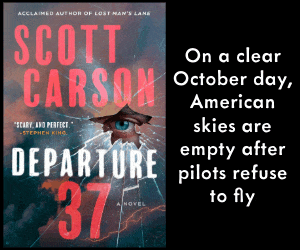
It was Christmas 2016, and I was having a meal one evening with a friend who is a cyber-crime expert. We chatted about the usual things—life, work, and relationships—when she showed me her phone and said, “Have you seen this?”
She was on Twitter. What I saw was a hashtag that made my stomach churn.
“It’s trending. Can you believe it?” she said, furious.
I couldn’t. The tag was #BeatingWomenIsHappiness. The men using the hashtag were congratulating a male group who rammed a young woman off her motorcycle and then proceeded to beat her. The victim of the attack was a Mexican senator, Ana Gabriela Guevara. Photos of her bruised face were shared by joyous wife beaters and cyber trolls all over social media. I was horrified. Not only had Ana been badly beaten, but she was also subjected to a barrage of online abuse. The message was clear: women belonged in the kitchen, doing what their husband told them. And beating them was justified if they disobeyed or disappointed.
“They’re cowards,” my friend said. “They hide behind their computers. They get their kicks out of causing pain and inciting fear. You know my niece committed suicide because of the lies spread about her on social media?”
I did. Her niece was fifteen when she died. Even though many of the trolls attacking her were school kids, the driving force behind the frenzy of lies on social media were from adult trolls who didn’t even know her. They searched the web for their victims and then set out to destroy the target’s life.
A fun evening with my friend had ended on a sad note. All the way home I kept thinking about the awful hashtag #BeatingWomenIsHappiness. At home, I started researching trolls and their personality traits. The concept for Widow’s Island, my latest crime-thriller, began to form. I normally write novels with kick-ass female central characters. For this story, however, I wanted the central character to be close to breaking point from the start, a widow mourning her husband’s death. She would appear vulnerable and easily manipulated. Yet she had a high-profile, successful career. The question bouncing about my head was whether cyber trolls would ever leave their computers and kill. I discovered that in Japan a university professor had been murdered by his troll. That was the moment I knew I had a serial killer story with a really exciting twist. It was time to interview the experts—the FBI.
I have liaised with law enforcement officers before to gather information for my novels, but never the FBI. By now, I knew that Stephanie Miller was my central character and that an FBI agent would play a supporting role in the book. Often in crime-thrillers it is the FBI agent who is the lead character. But I wanted Widow’s Island to be about an ordinary woman who must find a courage that she never knew she had to save her daughter’s life and her own. Through the special agent character, I would be able to reveal the serial killer’s past murders. It would be a cold case and his past failure to solve the crimes would haunt him.
A recently retired detective paved the way for me to contact the FBI office in Seattle. After my questions were screened, I arranged to meet the special agent at a café. Over coffee we talked about the Dark Tetrad, the four personality traits of serial killers—psychopathy, sadism, Machiavellianism, and narcissism. I had done my homework before our meeting and had come across theories that serial killers and cyber trolls displayed similar traits. Both serial killers and cyber trolls were also addicted to what they did.
“Is it possible,” I asked, “for a serial murderers to stop killing for a period of time, if he or she were capable of satisfying the urge to inflict pain through the act of trolling?”
I didn’t need to hear the answer to know that I had the crux of my story.
There was one final detail that I wanted to research. The location. A remote island is a great place to set a crime-thriller, especially if the only way on and off the island is by ferry. If a storm hits, the ferries stop running and the inhabitants are cut off from any help they might need. Add to that the fact that Stephanie and her daughter, Amy, would be new to the island and therefore unfamiliar with the area. They would live in a house on a lonely shore. There are a number of such islands near Seattle. I chose one that I knew well, having spent a leisurely vacation there one summer. Now I had everything I needed to begin writing the book. I had found my Widow’s Island.

L.A. Larkin’s nail-biting crime-thrillers have won her fans all over the world. Described as a superb “chiller thriller” writer by Marie Claire magazine, and praised by the king of crime, Lee Child, Louisa likes to write stories with lots of plot twists and characters that surprise. She has a Bachelor of Arts in Literature and teaches creative writing. Connect with her on Facebook @LALarkinAuthor, on Twitter @LALarkinAuthor and on Instagram @LA_Larkin_author. Her latest novel, Widow’s Island, is published June 3rd by Bookouture in ebook and paperback, and by Ulverscroft as an audio book.






Thanks so much for sharing my article! I hope you enjoy reading Widow’s Island as much as I did writing it.